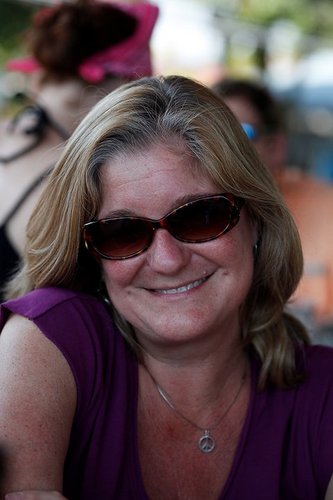
Neighborhood News Bureau, a required course for mass communications students, is undergoing a makeover.
Lane Degregory, a 2009 Pulitzer Prize winner and Tampa Bay Times reporter, is returning to USF St. Petersburg to guide students in experiential reporting. Students are scheduled to attend a city council meeting at the Gulfport City Hall and explore breaking news, police reports and other events in St. Petersburg’s Midtown district. Guest speakers for the course may include Times editors, public relations officers, radio personalities and more.
Degregory studied at the University of Virginia and worked as the editor-in-chief for the Cavalier Daily. Although there was no journalism program at her university, she loved writing for the campus daily paper because she could “get out there and do it.” Degregory has been writing as a journalist since she was 18. She joined the Tampa Bay Times 13 years ago to feed her passion for reporting, but her curiosity for teaching has drawn her back to the classroom. She previously taught a graduate course in USFSP’s journalism and media studies program.
Now, Degregory, 46, balances a more than full-time career as a journalist, mother of two teenage boys (and two dogs, Murphy the pit bull-chocolate lab and Taz the Australian cattle dog) and an adjunct journalism professor. She recently sat down with the Crow’s Nest to discuss the balancing act, writing and her goals as an educator.
The Crow’s Nest: There was some anticipation from students for you teach this course. How do you feel about students feeling this excited?
Lane Degregory: It’s cool but it’s also intimidating because I’ve never really done this before … I’m just trying to figure out how to launch them. They all have the skills they need, they just to do it. We’ve been talking over the syllabus and the curriculum, trying to figure out what they need and want … I’m trying to figure how to make it more practical since most of them are seniors.
CN: How were the first couple of classes?
LD: So far, we’re doing well … The class has been meeting at the Neighborhood News Bureau in the Sanderlin Center for the past few years and was smaller. I’ve got 20 students plus two grad students and there was just no room to get in the door. We had people standing out in the hallway, so we had to regroup and we have the class back on campus now, which is a whole lot better from the space thing and figuring out how we’re all going to fit in there.
CN: What are some of the first assignments for the course?
LD: The first thing they just turned in was an obit. I had them interview family members since they’re new to that very first one. They were really good. They really picked it up and know what they’re doing. We’re going to take a field trip on Tuesday. We’re going to the Gulfport City Council, a small town municipality, we’re going to talk about public meetings because I know that’s a lot for the first few years of journalists’ careers, you end up covering meetings of all sorts. We’ll go to that meeting Tuesday evening and then I’m going to send them out to the community and they’re going to each find their own (story) to cover for the next assignment.
CN: What lessons will you offer young reporters for the first real world assignments?
LD: The next assignment we’ll be working on is breaking news, so I’ll send them out to follow up on something in the news somehow or if they come upon something that is happening.We’ll try to go to the police station and look up police reports. I want to take them to drug court for a day so they can go sit in the courtroom and watch how that unfolds. I was in the bureau for the first seven years of my career as a reporter, so I covered every little thing; meetings, fire, trials, everything you can come across. So it’s going to help that they will have done that at least once or twice, if not with me, but with other students where they can figure it out together before they have to actually go do it for the first time for a job.
CN: Your class is structured on experiential learning with students in the field. How do you feel about this learning technique and how it helps journalism students?
LD: There are days I left on the syllabus as working field days because I want them to get used to juggling a sort of schedule. When I tell them about being a journalist, I tell them it’s kind of like being a paramedic, because you’re always on call. I think that’s important, especially in their senior year, because they’re doing it, they’re not just reading about it or studying it.
CN: You’ve mentioned opportunities for students to be published in the campus newspaper, the St. Pete Times, and possible other news outlets. How are you preparing them for real publication?
LD: I think a lot of them have never thought about it before, so I’m offering extra credit for anything they get published, five points extra credit. There’s some grade incentive there as well. I know that once you see your name in print, you get that rush of ownership and I want them to feel that. I want them to be feel proud that other people are reading it and not just me.
CN: How are you stacking the hats of journalist, mom and teacher?
LD: I was excited about the opportunity [to teach]. It’s close so it’s convenient. I wouldn’t be able to drive to Gainesville or Miami or somewhere to teach. I had nine extra vacation days that carried over this year, so I’ve spent a lot of time away from the Times trying to plan for this class (and) get geared up.
news@crowsneststpete.com


